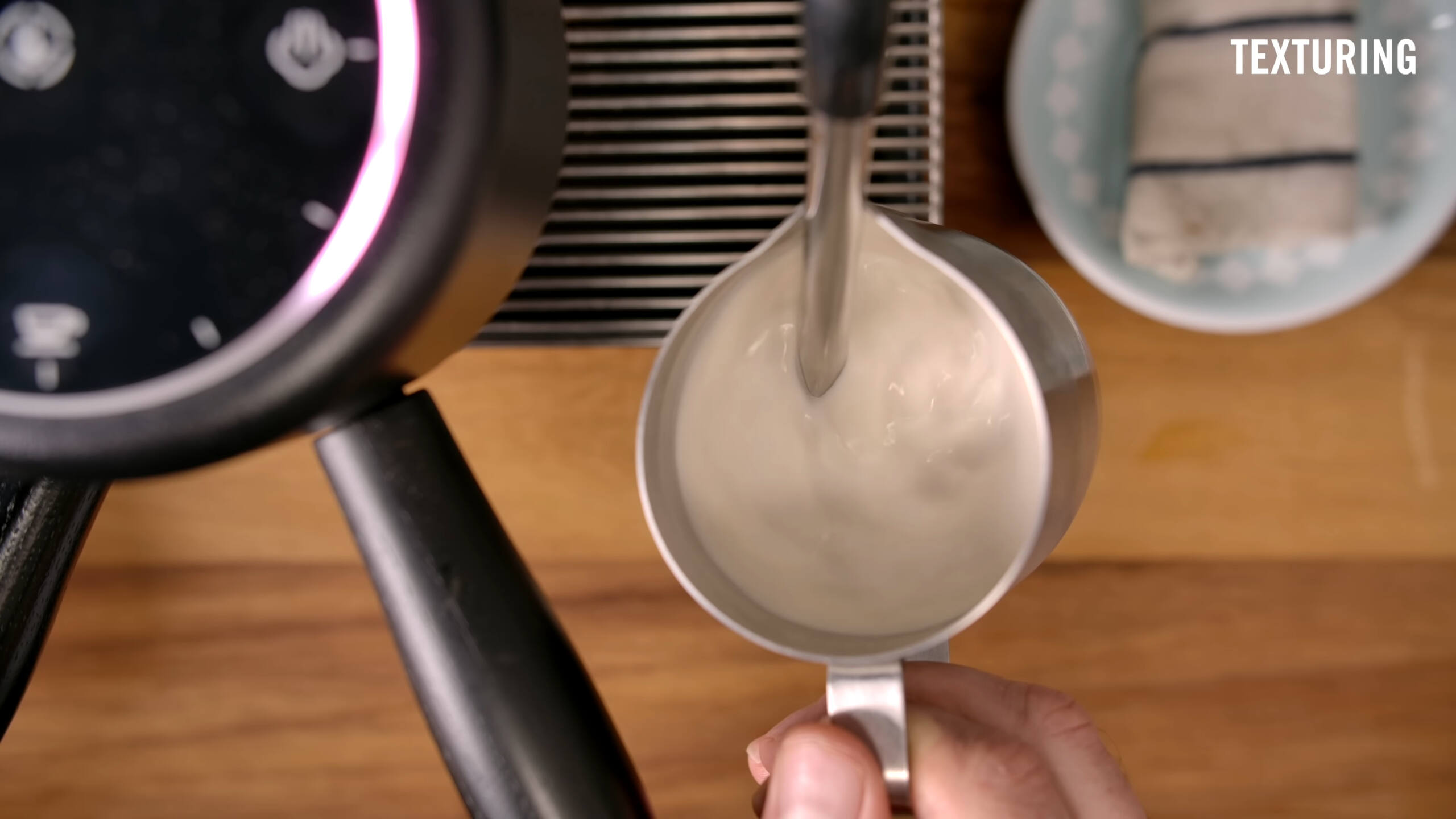Milk texturing is an essential skill for any barista or coffee enthusiast. Milk texturing is the base of creating different coffee drinks. Whether you need to make a cappuccino, or a latte, you need to texturize the milk according to the recipe.
The word texturing refers to the act of introducing air to milk, to make your milk creamy or frothy.
In this article we will introduce you to the key concepts of milk texturing and will show you how textured milk affects the flavor and taste of your coffee. This article is not a tutorial on frothing and steaming, but it has links to other articles which go in detail on the subject.
History of Textured Milk
Steamed milk was invented in the late 19 century, but the first steam wand on an espresso machine came only in the early 20th century. Luigi Bezzera was the one who included a steam wand on an espresso machine in 1901. Initially, steamed milk was just a way to tone down espresso's sharp taste with creamy milk.
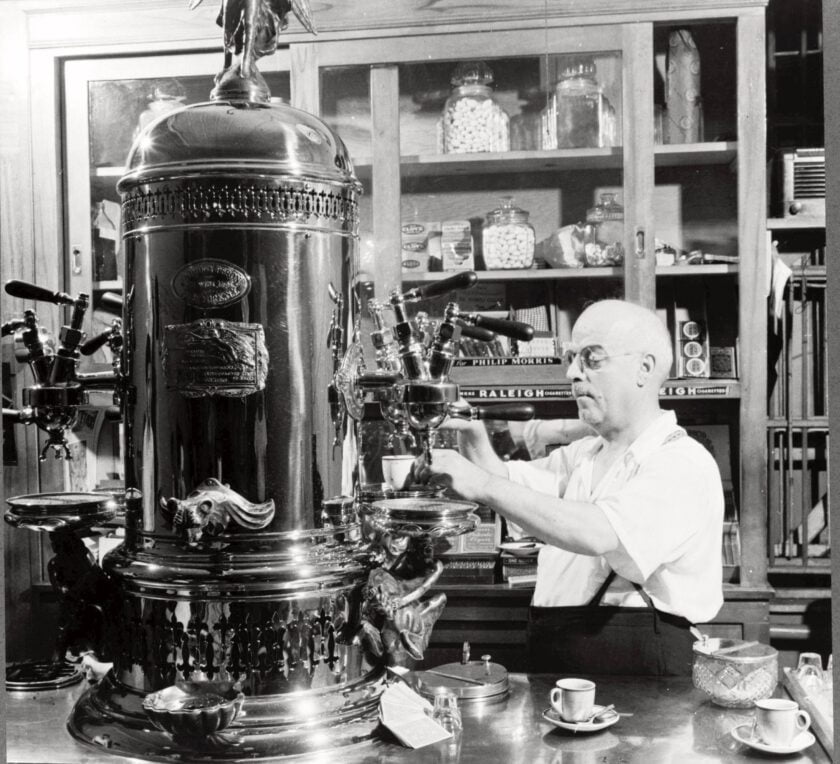
The latte art only became popular in the latter 20th century, elevating milk texturing to a sophisticated skill. Although there are numerous earlier accounts of latte art in Italy, it was with David Schomer of Espresso Vivace, in Seattle, that latte art became a thing. Schomer, influenced by Italian baristas and driven by precision and creativity, refined the technique of pouring microfoam into espresso to create patterns. He then trained more and more baristas to produce latte art.
His coffee shop baristas would later pour for the first time the bee, the heart, and the rosetta. Latte art has since become a must in any upscale coffee shop.
Innovations like electric frothers later democratized this art, enabling enthusiasts to recreate café-style beverages at home.
The Role of Milk in Coffee Drinks
There is a magical relationship between milk and coffee. People add milk for various reasons, to tone down the coffee's strength, as a buffer for a sensitive stomach, or just for the taste.
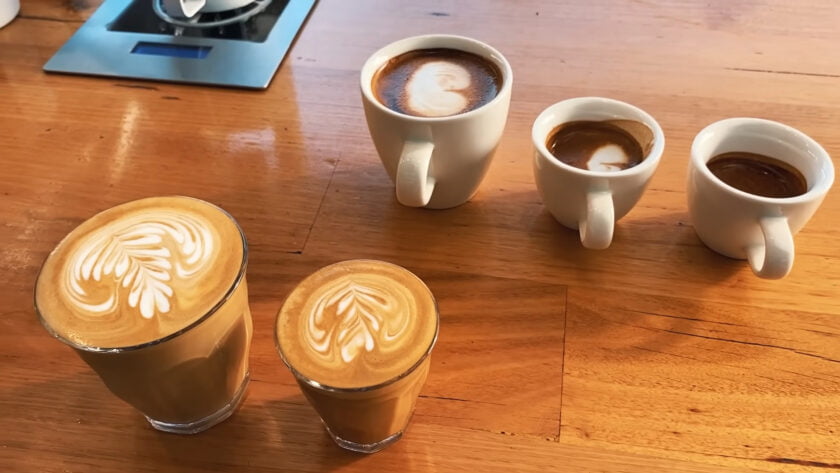
There is a saying circulating among baristas, if you have milk and coffee, you can create the most complex beverage menu for a coffee shop. Just by changing the quantity and the milk texturing technique, you can completely change an espresso drink. You can make a latte, or a cappuccino, or a flat white. All these three coffee drinks contain the same three ingredients: water coffee beans and milk. The difference is in the ratio between the three ellements and the preparation thechniques.
These two components, when combined skillfully, elevate the coffee-drinking experience to new heights, offering a sensory journey that is both invigorating and comforting. The role of milk in coffee drinks is not just complementary; it is transformative. To give you an idea, there are many cappuccino recipes, including dry cappuccino and wet cappuccino. The difference is the ammount of milk and the milk texturing style.
Let's take a deeper look at how milk interacts with coffee, and why does it have such a profound effect on our caffeinated drinks.
Complementary Relationship Between Coffee and Milk Flavors
Coffee is known for its robust and often bitter notes. While some appreciate that bitterness plain, some find it too intense. Milk is the perfect ingredient to counteract that sharpness. The creamy sweetness of milk tones down the acidity and bitterness of the coffee, making it more palatable.
Milk has a natural sweetness, and this sweetness is the perfect pair to the bitterness and acidity of coffee.

Coffee is mostly prized for its flavors and aromas, and rarely a coffee can stand out for its mouthfeel. Espresso is the exception. This is probably one of the reasons people love it. It coats your tongue, and you can literally feel the taste of the espresso longer than any other coffee.
A microfoamed milk will enhance the mouthfeel of your coffee. The micro bubbles in the milk will literally change the taste of your coffee, even though chemically, there is no change in your coffee. Textured milk tastes different than scalded milk.
How Does Texture and Taste of Milk Impact Espresso-Based Beverages?
- Creamy Mouthfeel: Steamed milk adds a smooth, creamy texture that blends seamlessly with the rich espresso, creating a harmonious balance in drinks like lattes and flat whites.
- Microfoam Quality: The quality of microfoam influences the mouthfeel, offering a velvety texture that enhances the overall sensory experience of the coffee.
- Sweetness Perception: Properly textured milk can naturally enhance the sweetness of the beverage, reducing the need for added sugar.
- Temperature Balance: The ideal temperature of textured milk (around 60 to 65 degrees Celsius) can unlock the espresso's flavors without overpowering or scalding the milk, maintaining the perfect balance.
- Aesthetic Appeal: The ability to create fine microfoam is crucial for latte art, adding visual appeal to the beverage and enhancing the enjoyment of the drink.
- Flavor Release: The interaction between textured milk and espresso can release new flavor notes, creating a more complex and enjoyable drink.
- Sensory Experience: The combination of perfectly textured milk and espresso provides a multi-dimensional sensory experience, from the initial aroma to the final taste.
We briefly showed that it's not only the flavor, but also the texture of milk that matters in a recipe. Properly textured milk contributes to the silky-smooth mouthfeel that is highly sought after in espresso-based beverages. There is a third way milk impacts a coffee's taste, and this is more subtle.
When properly steamed, milk will turn into microfoam, which is the base for most espresso-based drinks. Microfoam acts as a vehicle for an enhanced flavor release. The result will be diluted by the milk, but many flavors are easier to detect in this diluted state.
From a visual presentation perspective, steamed and frothed milk allow the barista to create latte art, or cappuccino decorations. We eat and drink with our eyes first. Maybe that's why latte art has gained so much popularity.
When milk is textured properly, and mixed with coffee according to the recipe, it elevates the drink from a mere beverage to an experience, marrying taste and aesthetic.
Differences between Steamed Milk and Frothed Milk
The two important ways to texture the milk are frothing and steaming. While frothed milk is used in cappuccinos most notably, steamed milk is used in most other coffee recipes.
Let's see what the differences between steamed milk and frothed milk are. This will give you an insight on how texture affects the final beverage.
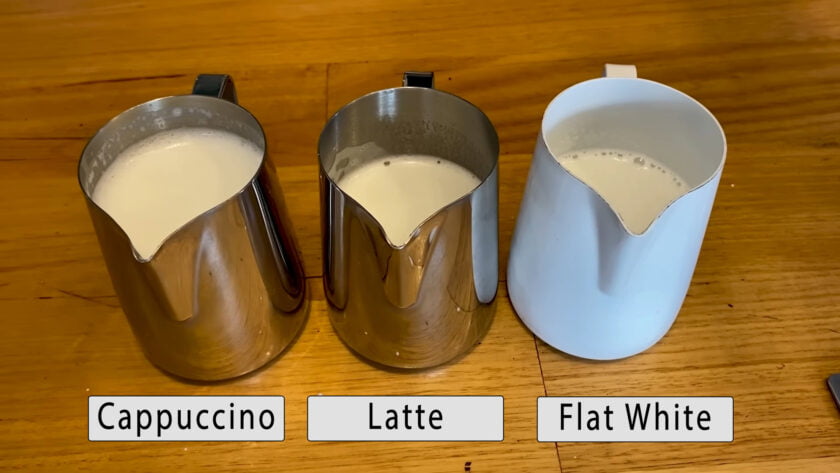
What is Steamed Milk?
Steamed milk is characterized by its velvety texture, which is created by using a steam wand to inject steam into the milk. The silky-smooth, glossy microfoam, has tiny, fully integrated bubbles suspended throughout. When mixed with coffee, the resulting beverage has a luxurious, creamy mouthfeel.
The barista uses the espresso machine's steam wand to inject steam into the milk. During this process, the steam incorporates fine microbubbles into the milk, and heats up the milk at the same time. Steamed milk is the foundation for most espresso-based beverages, such as latte and flat white.
What is Frothed Milk?
Frothed milk requires air to be incorporated. The result is a drier, lighter texture distinct from the velvety microfoam of steamed milk. Frothed milk has larger bubbles and a more voluminous foam. This can be achieved using the espresso steam wand, or a specialized frother.
Frothed milk does not contribute too much to a drink's flavor. The foamy texture floats on top of the beverage, and it typically doesn't mix with the espresso. Frothed milk is a meringue-like foam ideal for visual appeal.
Frothed milk is mostly used when preparing cappuccino, or certain latte recipes, such as latte macchiato. Frothed milk occupies 1/3 of a cappuccino cup, but it is very light and fluffy, so in the end it is a very small quantity of milk.
Unique Roles in Coffee Drinks
Choosing between steamed and frothed milk can significantly alter the taste and texture of your coffee drink. Steamed milk is often preferred for its ability to complement and convey the coffee's flavor profile without overwhelming it. On the other hand, frothed milk adds a light, airy lift to the drink, without diluting the coffee too much, and insulating the beverage to keep it warm longer.
The Science Behind Milk Texturing
Understanding the chemistry and physics involved in milk texturing is essential for mastering the art of creating the perfect foam for coffee drinks. When we texture milk, we are essentially introducing air into the milk and heating it, which alters its physical properties in a fascinating way. Making steamed milk to hold the texture is the challenge, and understanding the science will help you make better espresso drinks.
The Chemistry of Milk Texturing
Milk is an emulsion of water, fats, and proteins. As the milk is heated, the proteins, particularly casein and whey, begin to unfold in a process known as denaturation. This change allows the proteins to form a stable network around the air bubbles introduced by steaming, creating the foam that is crucial for texturing. The fats in the milk contribute to the creamy texture, and to stability of the texture. However, too much fat can affect the foam stability. It's the delicate balance between these components that creates the perfect milk texture.
It is worth noting that the amount of protein in milk is more important than anything, as the proteins in milk are what holds the foam together. The milk from the same farm/distributor can have a different composition, based on the season.
The best milk for texturing is whole milk, (North American standard), between 3.25% and 3.8% fat content.
In other countries full fat milk means literally non-skimmed milk which contains over 4% fat. This milk should be diluted with skimmed milk to bring it under 4%.
The Physics of Milk Texturing
From a physics standpoint, texturing milk involves creating a colloidal foam. When the steam wand introduces steam into the milk, the air is dispersed in the form of tiny bubbles. The temperature increase from the steam causes the milk's viscosity to decrease, which allows the bubbles to remain finely distributed. As the steam wand agitates the milk, it creates a swirling vortex. This vortex is crucial as it ensures the air incorporates evenly, leading to a smooth and consistent microfoam without large air pockets.
Ultimately, achieving the ideal milk texture and temperature is a skillful balancing act of controlling these chemical and physical reactions. The goal is to reach a temperature that unfolds the proteins adequately and creates a stable foam, without overheating the milk, which can lead to a burnt taste and compromised texture.
Simplifying the Complexity
Despite the complex interactions between the molecules in milk, the process can be mastered with practice and an understanding of the underlying principles. The key to success lies in controlling the temperature and the aeration process to create that smooth, silky feel that characterizes perfectly textured milk.
Alternative Ways to Texture Milk
Texturing milk is typically done using the steam wand of an espresso machine. What about those who don't have an espresso machine, or their espresso machine is not equipped with a steam wand. For these cases, there are alternative methods to achieve similar results. Here is a comprehensive list of alternative ways to texture milk:
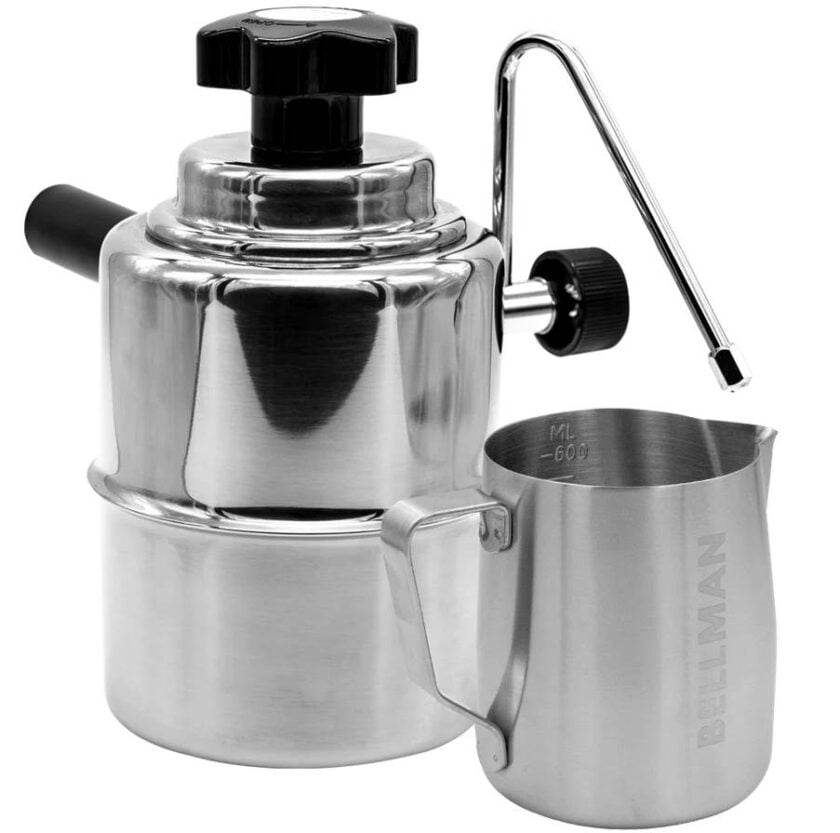
- French Press: Pump the plunger up and down in a French press filled with heated milk to aerate and create froth.
- Whisk: Use a manual or electric whisk to vigorously mix warmed milk in a bowl/container to create desired frothiness.
- Handheld Frother: A battery-powered handheld kitchen tool designed specifically for frothing warmed milk by spinning a whisk inside the milk.
- Jar Shake Method: Warm milk is filled into a jar up to halfway, securely sealed with lid, then rigorously shaken for 30 seconds to 1 minute to create foam.
- Blender: Pour slightly warmed milk into a blender and use short blending bursts on low speed to gently aerate the milk to create foam.
- Microwave Jar: After frothing milk in a sealed jar, remove lid and microwave briefly to further stabilize and enhance foam. A distinct take on the jar shake method.
- Automatic Milk Frothers: An automatic electric milk frothing machine, (Aeroccino by Nespresso, Breville, etc…), that heats and spins milk rapidly to create creamy froth consistency at the push of a button.
- Stovetop Steamer: A stovetop device which uses steam pressure from boiling water to force steam through a nozzle into milk to give it microfoam texture similar to espresso machine steam wand.
Each of these methods has its own pros and cons regarding the quality of the foam, the texture, and the temperature of the milk. While they may not all produce the fine, velvety microfoam that a steam wand can achieve, they are viable options for texturing milk at home without an espresso machine.
Wrapping it Up
Milk texturing transforms a simple coffee into a sensory masterpiece, blending art with science. This skill, vital for crafting exquisite latte art that delights both eyes and taste, requires mastery over techniques and tools. Embrace the learning curve, experimenting with different milks and temperatures to discover your unique style.
This article is just an introduction. Keep an eye on our website for more hands-on articles, and for equipment reviews.
Your experiences, questions, or tips could spark valuable conversations and deepen our collective appreciation for coffee. Let's continue to learn from each other and explore the art of milk texturing together. Ask us anything, or just drop a line in the comments below.
